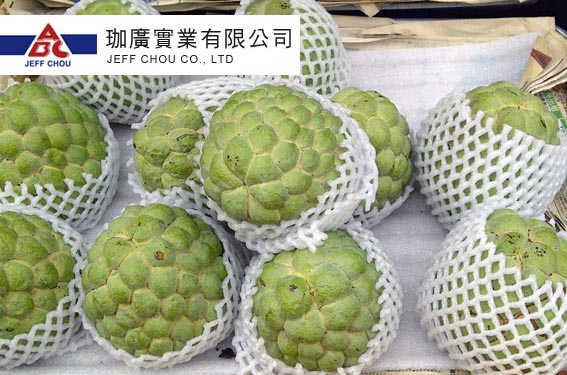Sugar-apple is the fruit of Annona squamosa, the most widely grown species of Annona and a native of the tropical Americas and West Indies.[1] The fruit is round to conical, 5–10 cm (2.0–3.9 in) in diameter and 6–10 cm (2.4–3.9 in) long, and weighing 100–240 g (3.5–8.5 oz), with a thick rind composed of knobby segments. The color is typically pale green to blue-green, with a deep pink blush in certain varieties, and typically has a bloom. It is unique among Annona fruits in being segmented, and the segments tend to separate when ripe, exposing the interior.
The flesh is fragrant and sweet, creamy white to light yellow, and resembles and tastes like custard. It is found adhering to 13–16 mm (0.51–0.63 in) long seeds to form individual segments arranged in a single layer around the conical core. It is soft, slightly grainy, and slippery. The hard, shiny seeds may number 20-38 or more per fruit, and have a brown to black coat, although varieties exist that are almost seedless.
There are also new varieties being developed in Taiwan. The atemoya or "pineapple sugar-apple", a hybrid between the Sugar Apple and the Cherimoya, is popular in Taiwan, although it was first developed in the USA in 1908. The fruit is similar in sweetness to the sugar apple but has a very different taste. Like the name suggests, it tastes like pineapple. The arrangement of seeds is in spaced rows, with the fruit's flesh filling most of the fruit and making grooves for the seeds, instead of the flesh only occurring around the seeds.(quote from wikipedia)




